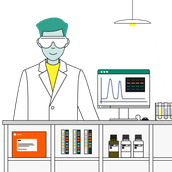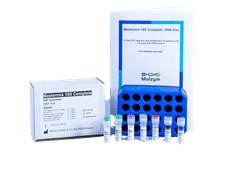Emerging Market for Protein Microarrays Shows Strong Growth
Advertisement
As protein arrays have become increasingly consistent and reliable, more scientists have begun to incorporate them into their experiments. A recent study of proteomics researchers reveals that while 34% of respondents currently use protein microarrays, 48% plan to use them in the future. Among the scientists who intend to utilize protein microarrays, 69% plan to do so within the next 12 months. This group of researchers also generally expects to use protein arrays with a greater density than current users -- 68% of respondents now using protein microarrays focus on subsets of proteins, usually fewer than 100 per array. However, only 54% of future users intend to utilize arrays with fewer than 100 proteins printed on them.
In order to benchmark the current state of protein microarray technology, BioInformatics, LLC announced the publication of its latest report "Protein Microarrays: Technology Adoption & Utilization." Based on a 39-question survey of 842 proteomics researchers, this report benchmarks the current state of the market for protein microarrays, reagents and instrumentation, and microarray readers. Additionally, the report examines the most critical factors related to array content as specified by both current and future protein microarray users: molecular interactions preferred; applications performed; protein classes studied; number of proteins arrayed (i.e., density); replicates required; and samples per array analyzed.
Clontech -- a subsidiary of Takara Bio -- and Invitrogen (NASDAQ:IVGN) are the top suppliers of protein microarrays. However, slightly less than half of all arrays used are from pre-printed commercial sources. The remainder are self-printed, printed in a core lab or printed in a collaborator's lab. Respondents cited convenience as the primary factor that influenced their decisions of the type of array to use, while availability was also an important factor. "Interestingly, price does not seem to be a major factor in people's decisions," noted Tamara Zemlo, Ph.D., M.P.H., Director of Syndicated Research and Analysis. "However, in deciding between two arrays that performed identically, one third of respondents indicated that they would use price to decide. This seems to indicate that while convenience and availability are ranked as more important than price, researchers are not completely price insensitive."
Respondents indicated that the most desired future improvement to protein arrays would be demonstrating proof of concept for new applications. The creation of whole-proteome arrays and arraying functional membrane proteins were considered highly desirable as well. When asked specifically about whole proteome arrays, only a very small portion of respondents -- 2% of current protein array users and 3% of future protein array users -- would not be interested in a whole proteome array.
As protein arrays have become increasingly consistent and reliable, more scientists have begun to incorporate them into their proteomics experiments. Researchers are attracted by the technology's ability to detect protein expression more quickly and easily than traditional approaches such as 2D gel electrophoresis and mass spectrometry. "By allowing scientists to look at multiple protein interactions simultaneously, the seemingly insurmountable challenge of characterizing an organism's entire collection of proteins -- the proteome -- is within reach," stated Dr. Zemlo. "There is tremendous excitement about the potential of protein arrays to further our understanding about protein expression, function and structure on a microscopically global level."
Other news from the department business & finance
These products might interest you
Most read news
More news from our other portals
See the theme worlds for related content
Topic World Mass Spectrometry
Mass spectrometry enables us to detect and identify molecules and reveal their structure. Whether in chemistry, biochemistry or forensics - mass spectrometry opens up unexpected insights into the composition of our world. Immerse yourself in the fascinating world of mass spectrometry!

Topic World Mass Spectrometry
Mass spectrometry enables us to detect and identify molecules and reveal their structure. Whether in chemistry, biochemistry or forensics - mass spectrometry opens up unexpected insights into the composition of our world. Immerse yourself in the fascinating world of mass spectrometry!




























































